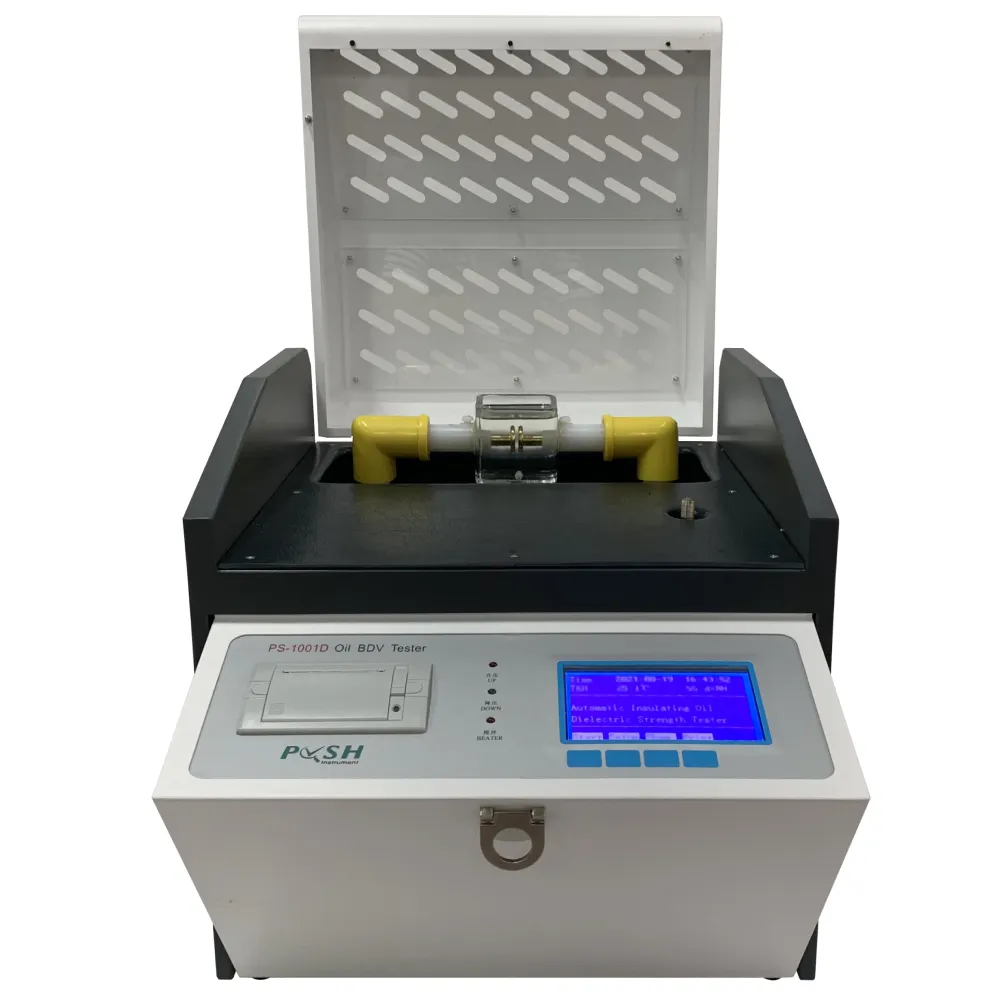 English
English


Winding Resistance Measurement Device for Electrical Equipment Testing and Analysis
Understanding Winding Resistance Meters Essential Tools for Electrical Maintenance
In the realm of electrical engineering and maintenance, the importance of accurate measurements cannot be overstated. Among the crucial tools utilized for assessing the quality and performance of electrical windings, the winding resistance meter stands out. This device plays a vital role in ensuring the reliability of electrical machines, particularly transformers and electric motors.
What is a Winding Resistance Meter?
A winding resistance meter, also known as a low-resistance ohmmeter, is an instrument specifically designed to measure the electrical resistance of winding coils in transformers, motors, and generators. These measurements provide insights into the condition of the electrical windings and help identify potential issues that could lead to system failures.
The Importance of Measuring Winding Resistance
The winding resistance of electrical components like transformers and motors is critical because it directly relates to the efficiency and performance of the machine. High resistance in windings can result from several factors, including worn-out insulation, damage to the wire, or improper connections. These issues can lead to overheating, reduced efficiency, and ultimately, equipment failure.
By measuring winding resistance, engineers and technicians can determine whether a machine is operating within its specified parameters. This assessment is crucial during routine maintenance checks or before commissioning new equipment. If the resistance values are outside the acceptable range, further investigation and corrective action can be taken to prevent potential breakdowns.
How a Winding Resistance Meter Works
Winding resistance meters operate by applying a known electrical current to the winding and measuring the resulting voltage drop. Using Ohm's law (V = IR), the device calculates the resistance (R) of the winding. Some advanced meters also allow for the adjustment of the test current, enabling users to perform tests under different conditions.
Typically, winding resistance meters include features such as
1. Multiple Test Currents This allows users to measure resistance across different magnitudes, providing flexibility based on the application. 2. Automatic Calculation Many modern devices can automatically calculate and display the resistance, eliminating manual calculations and reducing human errors.
winding resistance meter

3. Data Logging Capabilities Some meters come equipped with data logging functions, enabling technicians to record resistance measurements over time. This feature helps in tracking the performance of the winding and spotting trends that may indicate deterioration.
4. Safety Features Given the high currents often present in electrical systems, most quality winding resistance meters include built-in safety features to protect both the operator and the equipment.
Best Practices for Using Winding Resistance Meters
To ensure accurate and reliable measurements, technicians should adhere to several best practices
1. Calibration Regular calibration of the meter is essential for maintaining accuracy. Users should follow the manufacturer’s guidelines for calibration frequency and procedures.
2. Proper Connection Ensure that all connections are secure and free from corrosion or dirt. Poor connections can lead to erroneous readings.
3. Environmental Conditions Perform measurements in a suitable environment. Extreme temperatures or humidity can affect the readings and the performance of the meter.
4. Understanding Specifications Familiarize yourself with the specifications of the winding resistance meter being used, including its maximum test current and resistance range.
Conclusion
A winding resistance meter is an indispensable tool for electrical engineers and technicians tasked with maintaining and ensuring the reliability of electrical machines. Through careful measurement of winding resistance, potential issues can be identified and addressed before they escalate into serious problems. As the demand for efficient and reliable electrical systems continues to grow, the role of the winding resistance meter will only become more significant in the landscape of electrical maintenance and engineering. Regular use and proper handling of this device will contribute to enhanced operational efficiency, leading to safer and more reliable electrical systems.
-
Differences between open cup flash point tester and closed cup flash point testerNewsOct.31,2024
-
The Reliable Load Tap ChangerNewsOct.23,2024
-
The Essential Guide to Hipot TestersNewsOct.23,2024
-
The Digital Insulation TesterNewsOct.23,2024
-
The Best Earth Loop Impedance Tester for SaleNewsOct.23,2024
-
Tan Delta Tester--The Essential Tool for Electrical Insulation TestingNewsOct.23,2024





